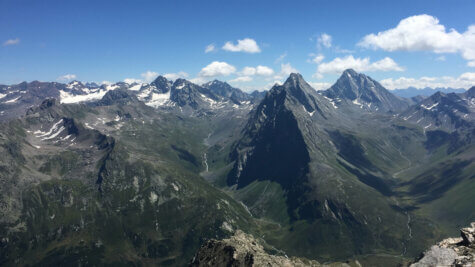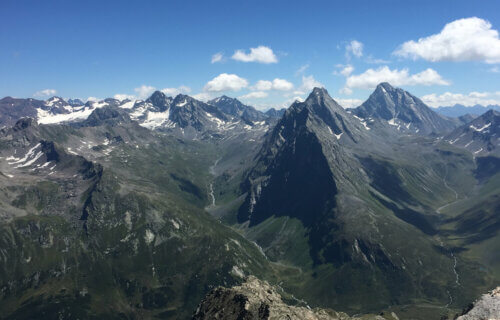BASEL, Switzerland — The “absolutely massive” consequences of climate change in the Alps are now visible from space, new research reveals.
Global warming is having a “particularly pronounced” impact on the Alpine region, according to Swiss scientists. Just like the Arctic, the snowy mountain range is turning green.
Researchers from the University of Lausanne and the University of Basel used satellite data to show that vegetation above the tree line has increased in nearly 80 percent of the mountains famous for ski holidays. Snow cover is also decreasing, but only slightly so far.
The research team says melting glaciers are becoming a symbol of global warming in the area. While the reduction in snow cover is now visible from space, it’s not even the biggest change.
Working with colleagues in Finland and the Netherlands, the Swiss researchers examined the change in snow cover and local vegetation using high-resolution satellite data from 1984 to 2021. Plant biomass above the tree line increased in more than 77 percent of the region over that time. The researchers say that the phenomenon – which they call “greening” – is already a common sight in the Arctic.
“The scale of the change has turned out to be absolutely massive in the Alps,” says study lead author Professor Sabine Rumpf from the University of Basel in a media release.

Climate change is changing the local makeup of plants
In the Alps, the team explains that the area is becoming greener because plants are colonizing new grounds and is generally becoming denser and taller. Previous studies have mainly focused on the impact of global warming on the region’s biodiversity and changes in local plant species. However, no one had conducted such a comprehensive study on the changes in vegetation productivity in the Alps.
The new study, published in the journal Science, shows that the increase in vegetation in the mountains is largely due to changes in rain levels and rising temperatures.
“Alpine plants are adapted to harsh conditions, but they’re not very competitive,” says Rumpf.
As the environment changes, researchers say these specialized species are losing their advantage and other plants are overtaking them.
“The unique biodiversity of the Alps is therefore under considerable pressure,” Rumpf adds.
In contrast to vegetation, Prof. Rumpf notes that the extent of snow cover above the tree line has only changed slightly since 1984. During their study, the researchers excluded regions below 1,700 meters (5,600 feet), glaciers, and forests. In the remaining regions, they found that snow cover decreased significantly in almost 10 percent of the area.
“Previous analyses of satellite data hadn’t identified any such trend,” says Professor Antoine Guisan from the University of Lausanne. “This may be because the resolution of the satellite images was insufficient or because the periods considered were too short.”
“For years, local ground-based measurements have shown a decrease in snow depth at low elevations,” adds Professor Grégoire Mariéthoz. “This decrease has already caused some areas to become largely snow-free.”
Less snow brings other natural hazards
The research team warns that as global warming continues, the Alps will continue to shift from snow-covered to green and bushy, creating a vicious circle.
“Greener mountains reflect less sunlight and therefore lead to further warming – and, in turn, to further shrinkage of reflective snow cover,” says Rumpf.
Global warming also causes further melting of glaciers and the thawing of permafrost, which may cause more landslides, rockfalls, and mudflows. The team points out the important role of snow and ice from the Alps, which supplies drinking water and recreation for locals and tourists.
South West News Service writer Stephen Beech contributed to this report.

